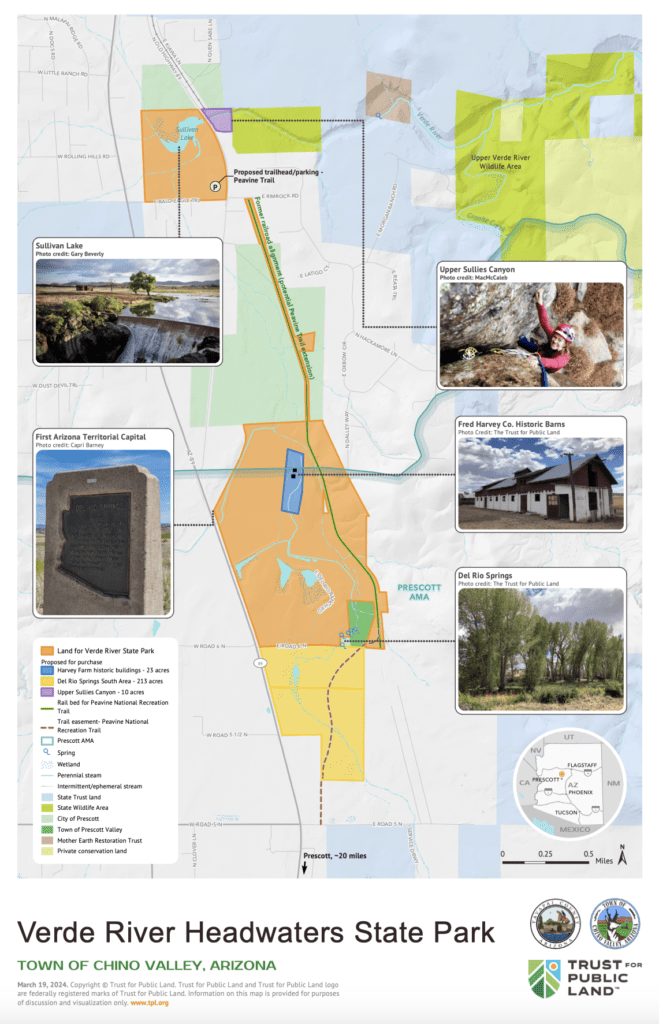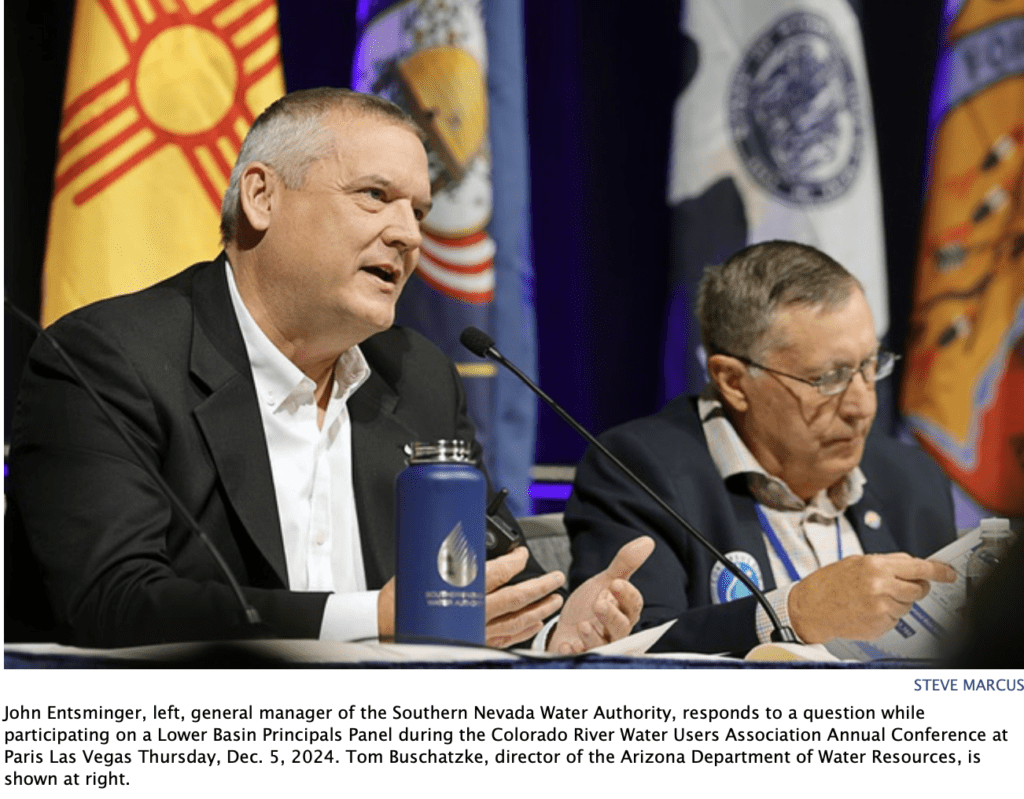Daniel Salzler No. 1284 EnviroInsight.org Six Items December 13, 2024
—————Feel Free To Pass This Along To Others——————
If your watershed is doing something you would like others to know about, or you know
of something others can benefit from, let me know and I will place it in this Information .
If you want to be removed from the distribution list, please let me know.
Please note that all meetings listed are open.
Enhance your viewing by downloading the pdf file to view photos, etc.
The attached is all about improving life in the watershed through knowledge.
If you want to be removed from the distribution list,
please let me know. Please note that all meetings listed are open.
Check our website at EnviroInsight.org
- Arizona Department of Water Resources. ADWR’s 2025 Supply and Demand Assessment Reports on groundwater basins are now live on our website at azwater.gov/supply-demand.
The purpose of these studies is to improve our understanding of the current and future water conditions and to assist in future planning throughout the state.
ADWR’s Rural Partnerships program is co-leading a Sustainable Funding Action Team, along with the Theodore Roosevelt Conservation Partnership and Southwest Decision Resources. The purpose of this Action Team is to increase access to funding opportunities for collaborative watershed restoration efforts in Arizona. The next meeting will be in January 2025. For more information on joining this call or the Action Team, please reach out to Christian Fauser at [email protected], or Laney Meeker at [email protected].
ADWR’s 2025 Supply and Demand Assessment Reports on groundwater basins are now live on our website at azwater.gov/supply-demand.
The purpose of these studies is to improve our understanding of the current and future water conditions and to assist in future planning throughout the state.
SAVE THE DATE! The Northern Arizona Municipal Water Users (NAMWUA) is hosting the Water Users Leadership Forum (WULF) on Friday, May 23, 2024 at High Country Conference
Center in Flagstaff, Arizona. Rooms are available at reduced rates at Drury Inn until April 5, 2025. Refer to group # 10122779 when booking. Please visit namwua.org for more information, or reach out to Ron Doba at [email protected]
2. Chill Out This Holiday Season Or You Might Get An Unexpected Bill From
Your Dog’s Vet. Stress levels in dogs are affected by how much stress their owners are feeling, according to a study from researchers at Queen’s University, Belfast (QUB).
“The experience of stress, particularly chronic stress, can have deleterious effects on canine behavior and welfare,” the study said.
It investigated whether changes in owner stress levels influenced dog stress, for example, on a visit to the vet.
And while visits to the vets are an important part of keeping a dog healthy, the study said they can also “result in acute stress as a result of confinement, uncertainty, pain, and loss of autonomy”.

Twenty-eight dogs and their owners took part in the study, which was carried out at a veterinary clinic in Dublin.
Ten of the dogs were male and 18 were female, and their ages ranged from one to 17 years old.
Half of the owners did a breathing meditation exercise designed to reduce their stress levels and help them relax during the study.
As part of it they also read affirmations like “My dog brings me joy” and “I care for my dog”.
The other half of the owners took a “Digital Stress Test”, which can induce moderate stress.
“If you’re in a bad mood the dog will react to that and generally she will become a little bit more naughty,” said Ivan Armstrong as he handed his black poodle a bowl of water.
“If we’re all very nice and calm she is as well,” he added.
A woman named Sonia had two rescues with her and said: “They’re social animals, if you’re stressed, they’re stressed.
“They pick up everything, that’s just natural for them. If everyone’s laughing they’ll come over an try to play, if anyone’s upset they’ll come over as well.”
The results also suggested that giving the dogs time to adjust to being in the vets and not rushing them into their examination could reduce any fear or stress they were feeling.
“This research highlights the importance of providing dogs with time to acclimatize to the clinic environment to reduce the stress experienced by dogs in these settings, which may in turn improve the accuracy of any physical examinations or diagnostics performed,” the study said. It also recommended that vets try to reduce the stress experienced by dog owners, as this would also help their dogs.
The research, carried out by vet Aoife Byrne and Dr Gareth Arnott from the School of Biological Sciences at QUB, has been published in the Journal of Applied Animal Behavior Science. Source: https://www.bbc.com/news/articles/cy4p3vgng47o?utm_source=join1440&utm_medium=email&utm_placement=newsletter
3. Knowing The Correct Name Makes You Seem Smart:
A. A group of frogs is called an:
i. Group
ii. Army
iii. Croak
iv. Colony
v. Jumpy
B. The den of an otter is called a:
i. Den
i. Lodge
iii. Couch
iv. Bed
v. Holt
Source: Wikipedia
Answers found at the end of the newsletter
4. Upper Agua Fria Watershed Partnership, 10 am MST Map of the proposed Verde River State Park from the December 3, 2024 meeting. Call for help: 833-851-8340, 1, 1

5. EPA Reforms New Chemicals Review Process to Better Protect Public Health, Promote Efficiency and Consistency.
Final amendments will ensure that new PFAS and persistent, bioaccumulative and toxic (PBT) chemicals are subject to safety review process prior to manufacture.
WASHINGTON – Today, Dec. 4, the U.S. Environmental Protection Agency (EPA) finalized amendments to the regulations that govern the Agency’s review of new chemicals under the Toxic Substances Control Act (TSCA) to ensure that new per- and polyfluoroalkyl substances (PFAS) and persistent, bioaccumulative and toxic (PBT) chemicals with potential for human exposure are always subject to the full, robust safety review process prior to manufacture. Under TSCA, EPA plays an important role by reviewing the potential risks of new chemicals before they can enter U.S. commerce and, when necessary, putting safeguards in place to protect human health and the environment. Today’s final rule also improves efficiency and aligns with the 2016 bipartisan TSCA amendments under the Frank R. Lautenberg Chemical Safety for the 21st Century Act, and is largely similar to the rule EPA proposed in May 2023.
“EPA’s review of new chemicals should encourage innovation, while also making sure that new chemistries can be used safely before they are allowed to enter commerce,” said Assistant Administrator for the Office of Chemical Safety and Pollution Prevention Michal Freedhoff. “Today, we’ve modernized our chemical reviews and continued to protect people from unsafe new PFAS.”
Eliminate exemptions for PFAS and PBTs with potential for human exposure
Today’s final rule ensures that new PFAS are always subject to the full, robust safety review process prior to manufacture by eliminating their eligibility for a low volume exemption (LVE) or low release and exposure exemption (LoREX). Existing regulations allow EPA to grant safety review exemptions for the manufacturing of chemicals with low production quantities, environmental releases or human exposures. These exemptions allow the chemicals (which historically have included some PFAS) to undergo a shorter review instead of the full, robust review prior to manufacture.
This action furthers the Biden-Harris Administration’s commitment to address the impacts of these “forever chemicals” and advances EPA’s PFAS Strategic Roadmap to confront the serious human health and environmental risks of PFAS. This final rule will help ensure that every community is protected from a potential range of severe health problems, including those that impact workers and children.
In April 2021, EPA announced new PFAS would be unlikely to qualify for these exemptions going forward given the complexity of PFAS chemistry, potential health effects, and their longevity and persistence in the environment. As the Agency then explained, it is challenging to complete a review of PFAS exemption submissions in the 30 days the regulations allow. This rule makes new PFAS categorically ineligible for the LVE and LoREX exemptions and makes PBT chemicals ineligible when environmental releases are anticipated or there are potentially unreasonable exposures.
Align federal regulations with existing law
Under TSCA, manufacturers (including importers) and processors must submit pre-manufacture notices (PMNs) for new chemical substances, significant new use notices (SNUNs) for significant new uses, and microbial commercial activity notices (MCANs) for microorganisms with commercial applications. Prior to the 2016 amendments, EPA only made formal safety determinations on approximately 20% of new chemical submissions. Now, the new law requires EPA to make one of five possible safety determinations on 100% of new chemical submissions before they can enter the market.
This rule amends the regulations by specifying that EPA must make one of the five specified statutory determinations on each PMN, SNUN, and MCAN received before the submitter may commence manufacturing or processing the new chemical substance. The rule also updates the regulations to list the actions required in association with each of those determinations.
These amendments align the regulations with TSCA section 5 requirements to reflect the full extent of new chemicals review, providing consistency and transparency in new chemicals review processes.
Improve the efficiency of EPA’s review of new chemical submissions to foster innovation
The final rule also makes several other changes to add efficiencies to the new chemicals review process, including clarifying the level of detail needed in new chemical notices and amending the procedures for EPA’s review of notices that have errors or are incomplete. EPA is changing its longstanding practice of accepting amended notices that contain information that was known or reasonably ascertainable at the time of the original submission and then accepting a request to suspend the review period. Instead, EPA will now exercise its authority under the regulations to declare the original submission incomplete and restart the review period when the completed submission is received. This will save time and resources that could instead be spent reviewing complete submissions more quickly.
These reforms will also help industry to provide complete submissions for review through a new set of information “pick-lists” that will be incorporated into the application form located in EPA’s Central Data Exchange in a phased approach. When submitters provide all the necessary information, EPA can assess risk more quickly and accurately. The rule supplements EPA’s TSCA New Chemical Engineering Initiative, an outreach effort launched in 2022 that helps stakeholders understand how to avoid providing incomplete data in their new chemical submissions. The amendments also include a streamlined process for submitters to request suspension of the review process for 30 days via oral or written request if more time is needed.
This rule will go into effect 30 days after publication in the Federal Register.
Read a prepublication version of the rule.
Learn more about EPA’s review of new chemicals under TSCA.
For further information: EPA Press Office ([email protected])
6. As Clock Ticks Down on Deadline For New Colorado River Agreement, Lower Basin States Pound The Table For Conservation.

John Entsminger, general manager of the Southern Nevada Water Authority, stressed to colleagues during the Colorado River Water Users Association conference at Paris Las Vegas the value of conserving water.
In Las Vegas, it’s a way of life — from removing grass to limiting the size of swimming pools and more. The effort is working.
Because of aggressive conservation, the water level at Lake Mead is 1,064 feet, he said. Without the effort, it could be at 921 feet.
“I wanted to make this point, not to pat ourselves on the back, but to show that change is possible,” Entsminger said.
Entsminger spoke as part of a panel at the conference led by Lower Basin states — Nevada, Arizona and California — to highlight conservation efforts and their proposal for future operations. The clock is ticking on the deadline for a new deal between the seven states, tribes and Mexico to manage the Colorado River with legal agreements appropriating the drought-stricken river expiring in 2026.
Nevada lost about 7% of its allocation, or 21,000 acre-feet of water, this year. However, because of recycling efforts, the state never uses its full allocation of up to 300,000 acre-feet — the smallest share of the seven states sharing water from the Colorado River.
Nevada isn’t alone in its conservation.
Arizona started reducing its use in 2014 through voluntary and mandatory conservation, said Tom Buschatzke, director of the Arizona Department of Water Resources. As a result, the state in 2023 took just 1.9 million acre-feet of its 2.8 million acre-foot allotment.
“We’ve shown we’re willing to do more,” Buschatzke said.
The Lower Basin states in March submitted a proposal to the Bureau of Reclamation for post-2026 operating guidelines calling for the three and Mexico to conserve 1.5 million acre-feet annually when system storage dips below 58%.
If combined system storage dips below 38%, the proposal calls for additional cuts — up to 3.9 million acre-feet — split evenly between the Lower Basin and Upper Basin states.
The plan is designed to provide for sustainable management of the system under a broad range of future conditions that have been exacerbated by drought and climate change, officials said.
The agreement expiring in 2026 calls for states in each basin to share 7.5 million acre-feet per year. However, that agreement is from 1922, long before climate change affected the water supply.
Coming up with a new pact will be a challenge considering it will take getting all seven states on board. And in California, which receives about one-third of the Colorado River’s flow, concern about the drought isn’t top of mind like it is in Arizona and Nevada. The same can be arguably said about the Upper Basin states — Colorado, New Mexico, Utah and Wyoming.
Still, California in 2002 reduced its water intake from 5.4 million to 4.4 million acre-feet, said JB Hamby, vice chairman of the Imperial Irrigation Valley Board of Directors in California. The state reduced its water use through irrigation programs, system and farm efficiency, and conservation programs.
California has the bulk of the agricultural productivity throughout the basin, Hamby said. It also has half the population of the entire basin and sustains $2 trillion of the nation’s economic productivity.
Low use in the Lower Basin has remained consistent or risen, Hamby said at the conference. However, since 2007, the Upper Basin has increased its usage by 300,000 acre-feet per year, he said.
“This idea that it’s not physically or hydrologically possible to do water conservation on the Upper Basin is absurd,” Hamby said. “If you are using water, you can use less too.”
Source: LasVegas Sun [email protected] / 702-948-7836 / @ilana_willi
Answers to No. 3 above:
A: i Army and/or iv. Colony
B. iii. Couch and/or v. Holt
Copyright 2024: EnviroInsight.org
